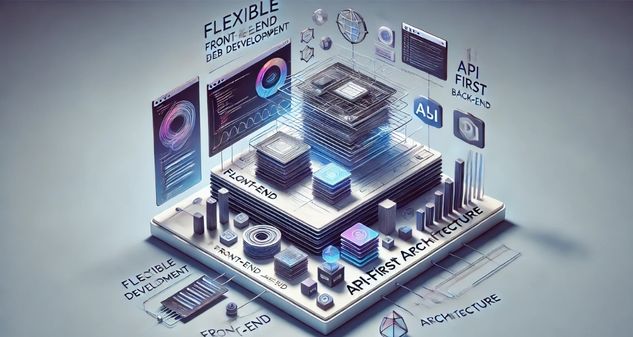Every business wants tools and systems that not only work today but also hold up under the pressure of tomorrow’s demands. The phrase “future-proof tech stack” gets tossed around a lot, but what does it really mean—and how do you know if your own stack fits the bill? As companies shift faster than ever, future-ready doesn’t just mean having the latest gadgets or cloud-based dashboards. It means building with adaptability, speed, and long-term growth in mind. Let’s walk through six key features of a tech stack that’s not just working now but ready for what comes next.
Rely on Smart Hosting
If your business has outgrown basic shared hosting or is still storing everything on-site, it might be time for a reality check. When customers expect lightning-fast responses and your teams rely on consistent access to critical tools, your server infrastructure becomes the foundation of everything else. That’s where colocation for businesses comes in. Instead of bearing the full burden of maintaining hardware in your own facilities, colocation allows you to place your servers in professional data centers—boosting reliability, security, and scalability.
Colocation is a step beyond just offloading infrastructure. It’s a strategic move that says, “We’re thinking long term.” You gain control over your hardware without having to deal with the power, cooling, and network demands that keep data centers running efficiently. For companies looking to expand without investing in entirely new IT departments, colocation balances independence with high-level support. That’s a critical building block for any stack that’s supposed to grow with your business—not against it.
Create a Front-End That’s Flexible Enough to Keep Up with Your Growth
One of the most common tech mistakes businesses make is building a website or app that looks great today—but locks them into a framework they can’t easily evolve. Many companies look for web developers that can create a flexible solution to this problem. One great option is a service like Adchitects headless development instead of traditional web development. Headless development separates your front-end presentation layer from your back-end systems. It might sound technical, but the benefit is simple: freedom. Your team can update the user experience without the need to rebuild the entire site from scratch.

Companies like Adchitects that adopt headless architecture aren’t just chasing trends. They’re future-proofing their operations by choosing flexibility over rigidity. They’re choosing speed over slowdowns. And when you’re working with experts who understand how to do this right, you’re not just getting a prettier site—you’re getting a platform built to evolve with your business, not restrict it.
Build With API-First Thinking
If your current tech stack feels like a group project where no one’s on the same page, chances are you’re missing an API-first approach. Modern systems aren’t isolated silos anymore. Your CRM, e-commerce platform, marketing tools, and analytics should all be in conversation with one another—and APIs make that possible.
When businesses build with API-first in mind, they’re prioritizing connectivity from the start. That means choosing platforms and services that are built to “talk” to each other, easily exchange data, and integrate seamlessly with specialized tools like an AI API for automation or machine learning capabilities. This kind of modularity keeps your business agile. You’re not stuck with a rigid structure; you can swap out one piece of your system without breaking the others.
Prioritize Data Portability Over Vendor Lock-In
Every new app or platform promises the world—but not all of them make it easy to leave. If your data is trapped in a system with no clear export tools, your business agility is at risk. A future-proof tech stack is one that allows you to take your data wherever you need it to go.
This doesn’t mean avoiding SaaS platforms altogether. It means choosing the ones that respect your right to portability. Can you easily export your customer information? What about your product catalog, transaction logs, or analytics history? If the answer is “no” or “it’s complicated,” that’s a red flag.
Portability means power. It allows you to shift platforms as needed, switch tools that better match your growth, and avoid being held hostage by outdated technology. The companies that build with this principle in mind sleep better at night—knowing they’re never more than a few decisions away from a better solution.
Get Built-In Scalability
A tech stack might seem great in your current setup, but what happens when your customer base triples? What if your product line expands, or your team doubles in size? Scalability isn’t about guessing—it’s about planning.
The best systems are designed to scale both vertically and horizontally. That means they can handle more data, more users, and more complexity without crashing or slowing down. But it also means your internal processes and integrations scale with it. Tools like cloud-native infrastructure, load balancing, containerized applications, and auto-scaling environments help ensure your stack grows smoothly alongside your business.
Scalability also means not tying yourself to platforms with usage-based pricing models that penalize success. You want technology that rewards growth—not punishes it with unpredictable costs or sluggish performance. A future-proof business doesn’t just think about today’s demand; it builds for what’s next, with room to breathe and expand.
See Also: The Digital Shift: Why Modern Businesses Are Embracing Procurement Software Rapidly









